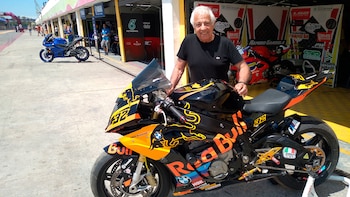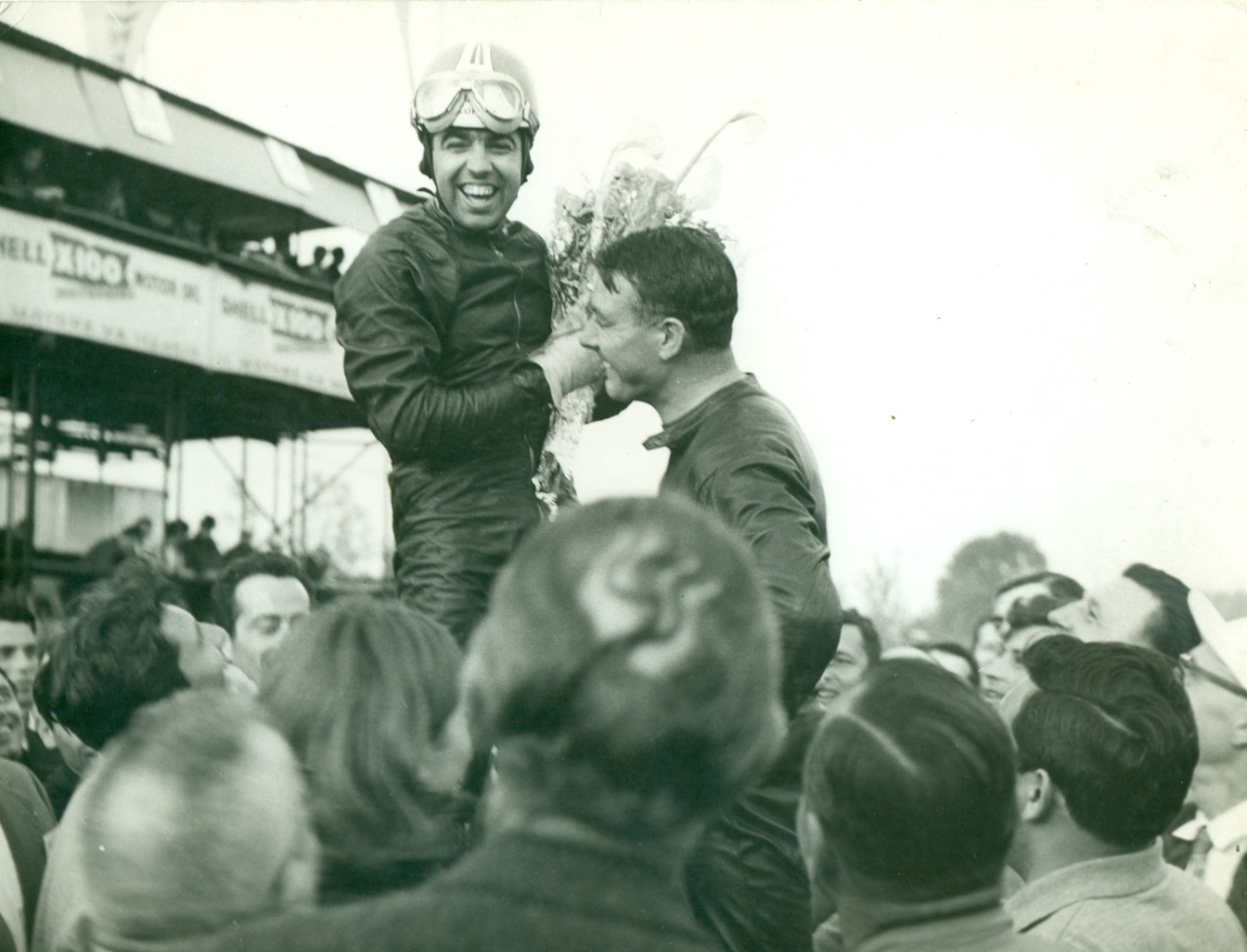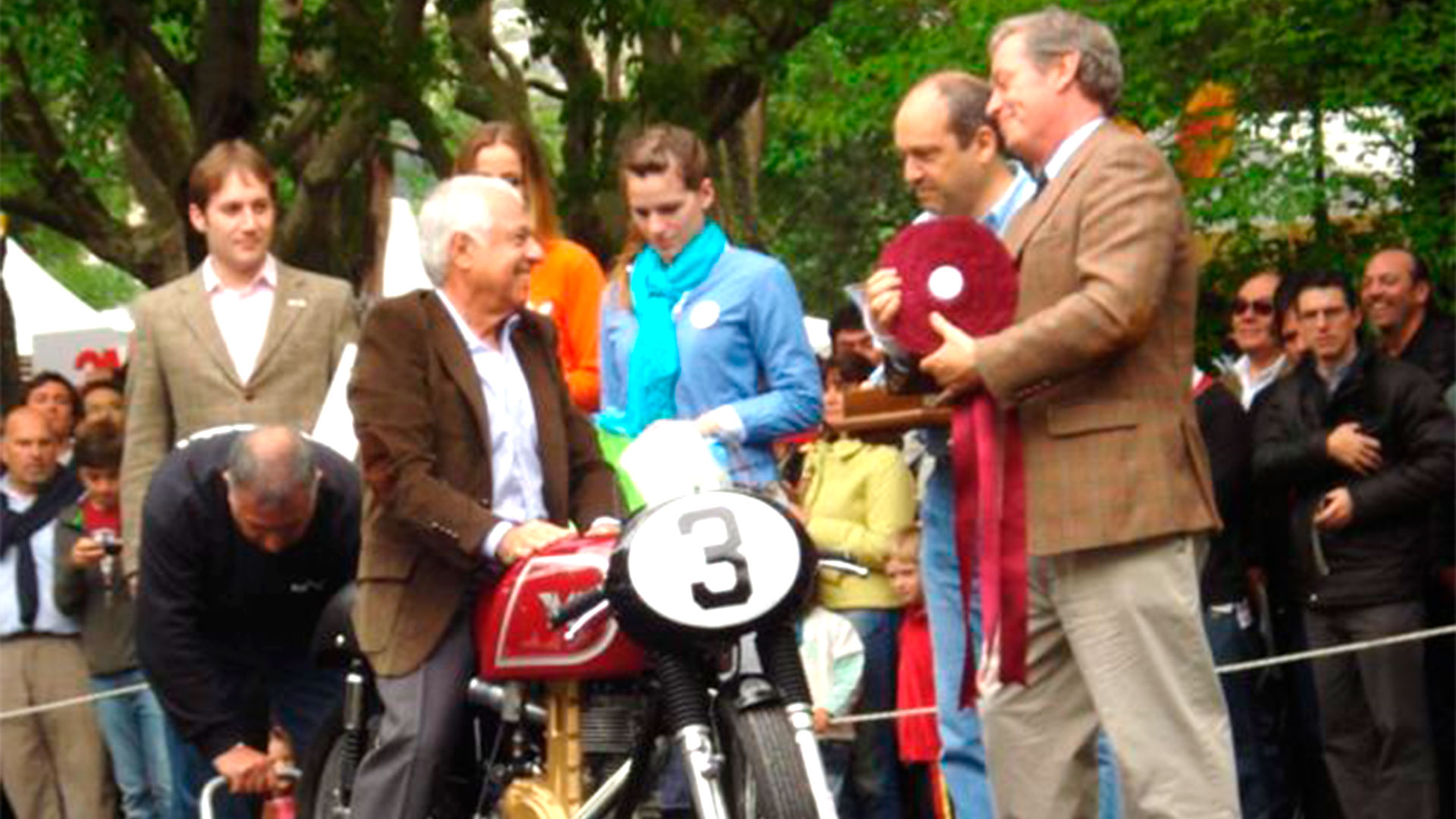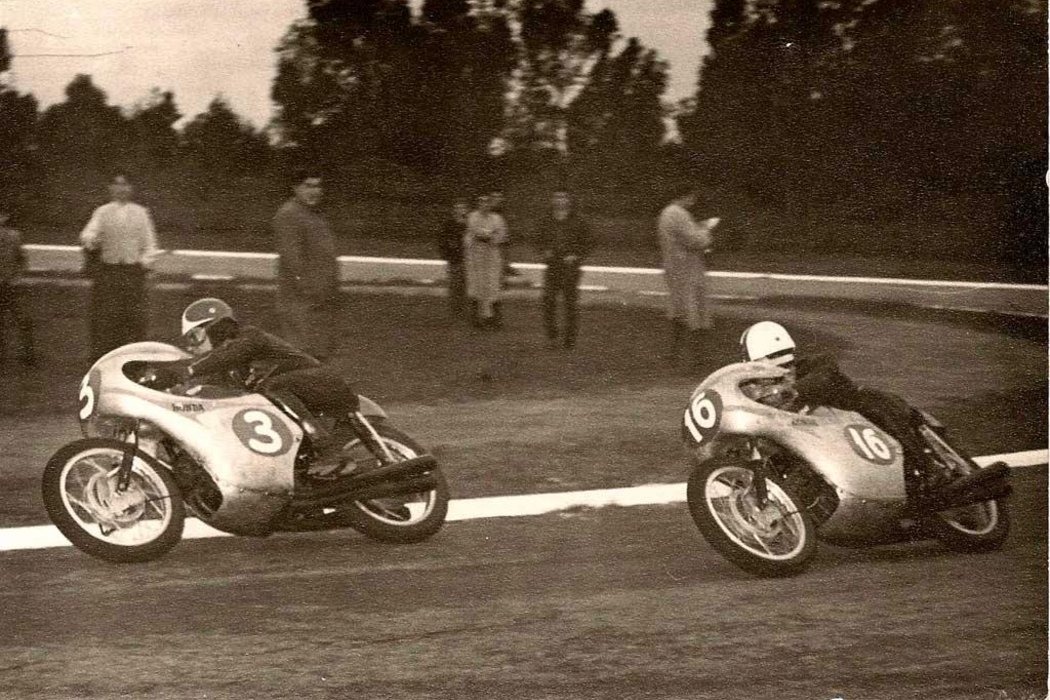
Sixty years ago there was a group of Argentine pioneers who made motorcycling popular. They managed to bring MotoGP and its minor categories to the country and got several local riders to face the best in the world. One of those who made history is Benedicto Chiche Caldarella, who on October 14, 1962 became one of the two albicelestes to win in 500 cm3, as was called the premier category of the World Championship at that time.
Chiche was born on September 1, 1940 in Vicente López and is a legend of the two wheels in our country. That race was the last date of the season, scored by the competition and the only one held outside Europe that year. It was raced at the Autódromo de Buenos Aires Oscar and Juan Gálvez and the extinct circuit number 2 of 3,912 meters was used. He was the one that reached the old hairpin, which was meters from the front door. This sector no longer exists and was occupied for the construction of the kartodrome.
The grandstands of the Buenos Aires Colosseum were full and it was a real two-wheeled party with all the classes of that time: 50 cm3, 125 cm3, 250 cm3 and 500 cm3. The test was valid for the world cup. Chiche and his people, after solving some problems on their Matchless G50 motorcycle, surprised everyone from the previous one by winning the pole position.
In the queen category, 12 riders raced. Caldarella went ahead and Englishman Arthur Wheeler (Moto Guzzi) and Austrian Bert Schneider (Norton), who left, could do nothing. Chiche won forcefully and the Autodrome vibrated with his demonstration. He was the second Argentine to win in 500 cm3, after Jorge Kissling in 1961. For the joy to be complete, the podium was full of Argentines: the winner was escorted by Juan Carlos and Eduardo Salatino, both with Norton. Behind were Chileans Pablo Gamberini (Matchless) and Amleto Pomesano (Matchless) and Uruguayan Manuel Soler (Norton). Infobae spoke to Chiche about that Sunday of glory and the present of motorcycling.
- What do you remember about that victory?
-The one I won in '62... I won the Grand Prix of the Argentine Republic. I prepared very well for that race. The foreigners were there and with (Juan Carlos) Salatino we had a very good race and we fought it between the two. We were able to do 1 and 2. So I had a very big memory of that race because it was the Grand Prix of the Argentine Republic, one of the first to be raced here.
- How was the participation of that weekend arranged?
-I had been racing since 1959 I raced with my father's motorcycle, with a Saturn 500. Then in '60 I won the entire Argentine and South American championships, with another Gilera just like it and in '61 we bought the Matchless esta, which we had a lot of problems and were able to solve all the problems in '62. From there I started winning races and won the championship of the year '63, but previously winning just at the Grand Prix of the Argentine Republic.

- How does it feel to be one of the two Argentines to have won in the top flight?
-I think it's a great satisfaction because in the 500 (cm3) category, which was the MotoGP of that time, there was no other Argentine (winner) again. It is a pity that so many years pass that we cannot have another Argentine driver, either with a title or with having won a Grand Prix of the Argentine Republic.
Caldarella was the first official Honda driver of Latin American origin in the World Speed Championship. The event took place at the Argentine Republic Grand Prix in 250 cm3 of 1961, with one of the famous RC 162 prototypes, champion that year with Mike Hailwood, who won nine titles: three in 250 cm3, two in 350 cm3 and 4 in 500 cm3. He also raced in Formula 1.
Since those first Grand Prix, the two wheels became a rage and later other exponents arrived such as the world champions Hugo Vignetti and Willy Pérez, who achieved podiums in 125 cm3. Although Sebastián Porto went further with his 250 cm3 world championship runner-up in 2004 and his seven victories in the fourth round. Caldarella also explains why Argentina is far from having a representative that emerges from national motorcycling, since it should be remembered that Gabriel Rodrigo runs on an Argentine license, but was born and trained in Spain.

- And why can't you? We had Seba Porto or René Zanatta who also did his thing too
-I think it was all very isolated, they were all very isolated campaigns. Today it takes a very, very big money, the package of money is very large. In our time the pilot had a lot to do with it and there a factory would take you, as I did for Gilera in Italy. So, without charging anything, they paid me everything and that's why I could get on and run. But today it's not like that. Today it takes millions to join a team, to have a good motorcycle, to become a professional like those who are racing now.
- Which current rider dazzles you in the MotoGP?
-There are many since all of them are required to ride the motorcycles that they ride now requires a technique and learning from the rider, which is to tune a motorcycle, something that is very difficult. Fabio Quartararo seems to me to be a great MotoGP champion, but sometimes you have to be a little lucky in racing, like the one he had last year.
- Any anecdote under the bike?
-The best was when I raced for the first time in Italy (Coppa d'Oro Shell), I went to a circuit that was Imola, no less, and I thought that the racetrack was mountain and not mountain, there were ups and downs. Well, I raced with the 500 cm3 Gilera Quattro, which was seven years older than the other bikes and I was able to win a race that didn't suit me in training. I won the race and the audience took me to the podium. That's it, the most.
That Gilera 500 that Chiche mentions was repaired in 1963 by Geoff Duke's team, which was still fast but not very reliable. When Scuderia Duke retired, Caldarella acquired one of these machines, with which it also participated in European races. At the United States Grand Prix, he impressed by following Hailwood with a tough duel, until his gearbox broke while at the Grand Prix of Nations he made the fastest lap in Monza and finished second behind the Hailwood driver.
At the age of 81, Chiche usually shows up vice on a street motorcycle. He was present in Termas de Río Hondo, Santiago del Estero at the Argentine Grand Prix and has not missed any edition since the return of the World Speed Motorcycle Championship in 2014. But he is also interested in the Argentine championship that he was able to win and is an authoritative opinion to analyze his reality.

- How do you see the current Argentine speed championship?
- It's very good and I've seen it on TV. I liked the show that the boys give, especially those in the smaller categories that are very close and which is the biggest show that is seen on a racetrack. It is a category to learn, without detriment to other categories.
- What does national motorcycling lack to be that of another era?
-Let Argentine motorcycling light up with someone who says “well, what is needed I'm going to put in so they can run”. And then, my dream, since always, is to be able to take ten boys to do all the school in Europe. Spain is a possibility because in all its minor categories you can learn and also so that they can be trained in the environment, which is very different from what we have here.

Caldarella also raced in cars and had good races at Turismo Carretera where he won a podium and joined the Automobile Club Argentino (ACA) team that started in Formula 2 National and reached European Formula 2 in 1970. In that team he was the companion of Carlos Alberto Reutemann.
- What do you remember about your time in motorsport?
Yes, but the car was a necessity. I raced for the first time in a Road Tourism that Jorge Cupeiro lent me, a Torino. He called me and said, “Do you want to try the car?” And so it was, I grabbed the car, went for a few laps and I felt comfortable and decided to run. I came out third in my first race and I remember getting a very good prize. In addition, I appeared in all the magazines, all the newspapers instead, when I arrived from Europe after having raced motorcycles, the comments were very small. I was on the ACA team that arrived in Europe, but after six months I returned. Then I raced in Turismo Nacional, some races with a Fiat 125, 128, but hey, that's how I lost interest. The topic of motorsport is another stage and I made money, but the motorcycle is the motorcycle, I should never have gotten off.

In the 2012 edition of Autoclásica, Chiche drove a Matchles G50 500 cm3 model 1961, similar to the one he used to win that race. The former pilot was honored at the show when half a century of his feat was celebrated. “I got on a replica that is from Claudio Scalise's museum and we were able to get that motorcycle in Europe that is a replica of the one I was racing. The fairing is faithful. I was able to do a few laps in Termas de Río Hondo in other editions of the Argentine GP and it was very exciting,” he recalls.
Today Chiche is asked for selfies by people who never saw him run since his triumph of 60 years ago transcended and was passed down for generations. Caldarella is one of those pioneers who made history in Argentine motorcycling and achieved its popularity. That explains why there is a crowd this weekend in Termas de Río Hondo, where more than 120,000 people are expected in the three-day accumulated.
“CHICHE” CALDARELLA




KEEP READING:
Últimas Noticias
Debanhi Escobar: they secured the motel where she was found lifeless in a cistern

The oldest person in the world died at the age of 119

Macabre find in CDMX: they left a body bagged and tied in a taxi
The eagles of America will face Manchester City in a duel of legends. Here are the details

Why is it good to bring dogs out to know the world when they are puppies



